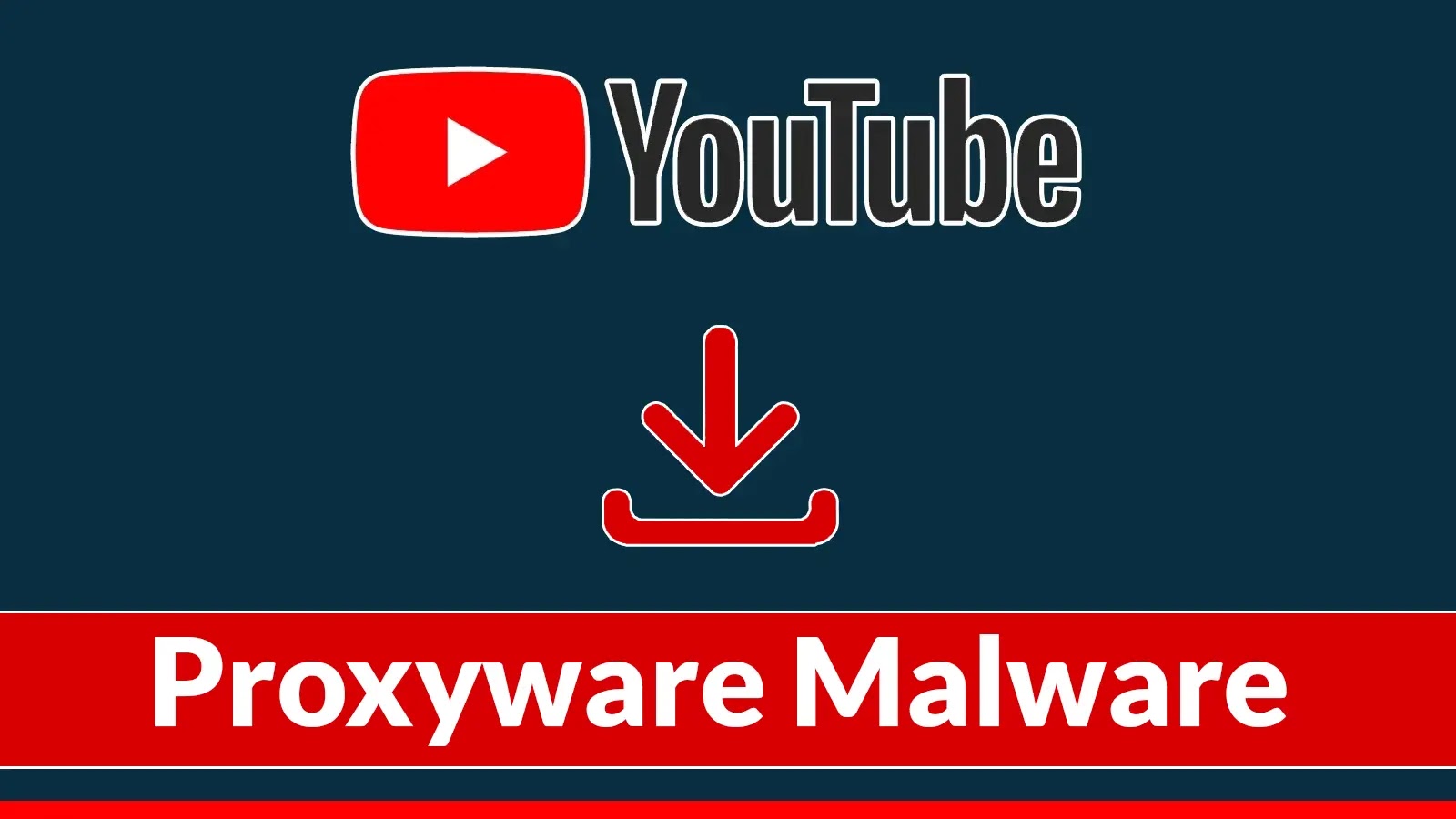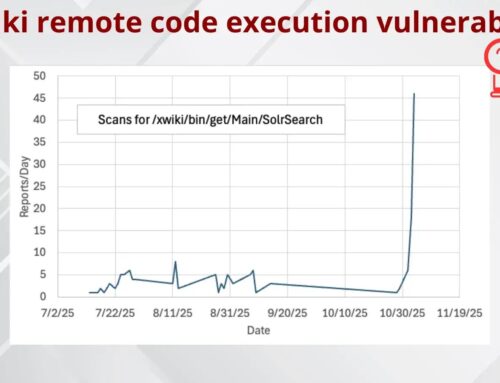
Proxyware Malware Mimic as YouTube Video Download Site Delivers Malicious Javascripts
The pursuit of convenience often opens doors to unforeseen risks. In the digital realm, the promise of free tools and content frequently masks malicious intent. Recent observations by cybersecurity researchers highlight a particularly cunning scheme: deceptive websites masquerading as legitimate YouTube video download services are actively deploying Proxyware malware. This sophisticated threat poses significant risks to user privacy, system resources, and network integrity. Understanding the mechanics of this attack is crucial for bolstering our collective defenses against such evolving threats.
Understanding the Proxyware Threat
Proxyware is a form of malware that, once installed, silently transforms a victim’s device into a proxy server. This means the attacker can route their internet traffic through the compromised device, effectively masking their own IP address and digital footprint. This capability is highly valuable for malicious actors engaging in activities like credential stuffing, distributed denial-of-service (DDoS) attacks, or bypassing geographical restrictions for illicit purposes. Victims often remain unaware, experiencing only subtle performance degradation or increased internet usage, while their systems are exploited for various nefarious operations.
Deceptive Tactics: The YouTube Video Download Lure
The attackers behind this campaign leverage a classic social engineering technique: exploiting user desire for free content. They create convincing, yet fraudulent, websites designed to appear as legitimate YouTube video download platforms. Users, seeking to obtain MP4 versions of videos, land on these sites through various means, including malvertising campaigns or search engine poisoning.
- Redirection Chains: The typical attack flow involves multiple redirections through various ad pages. This obfuscates the origin of the malicious payload and makes tracing the attack chain more difficult for researchers.
- Spaced-out Download Links: The deceptive sites do not immediately offer a malicious download. Instead, the “download link” for the purported video or utility appears sporadically, designed to blend in with legitimate ad content and lull users into a false sense of security.
- Trojanized Utility: The payload masquerades as a seemingly innocuous utility named “WinMemoryCleaner.” This name suggests a system optimization tool, further reinforcing the illusion of legitimacy. Users, believing they are improving their system’s performance or downloading their desired video, unwittingly execute the malware.
The “WinMemoryCleaner” Facade and Malicious JavaScripts
The core of this attack lies in the trojanized “WinMemoryCleaner” utility. While the exact technical details of its operation beyond the initial report are still under investigation, the critical takeaway is that this application installs and executes malicious JavaScripts. These scripts are responsible for establishing the proxyware functionality. JavaScript, being a versatile scripting language commonly used in web browsers and various applications, can be leveraged to perform a wide range of actions, including:
- Modifying system settings.
- Establishing persistent connections to command-and-control (C2) servers.
- Initiating outgoing network requests for proxying traffic.
- Downloading additional malicious components.
The use of JavaScript allows for a relatively light footprint initially, making detection by traditional antivirus solutions more challenging at the point of infection. The true malicious activity unfolds dynamically after execution.
Remediation Actions and Prevention Strategies
Protecting against proxyware and similar social engineering attacks requires a multi-layered approach. Individual users and organizations alike must prioritize cybersecurity best practices:
- Exercise Caution with Downloads: Always verify the legitimacy of software download sources. Prefer official websites or reputable app stores. Avoid third-party download sites, especially those promising free content from copyrighted sources.
- Ad Blocker and Script Blocker Usage: Employ robust ad blockers and browser extensions that can block malicious scripts (e.g., NoScript, uBlock Origin). These tools can prevent unwanted redirections and the execution of suspicious JavaScripts on deceptive websites.
- Endpoint Detection and Response (EDR): Implement EDR solutions on all endpoints. EDR can detect anomalous behavior, even from seemingly legitimate processes like “WinMemoryCleaner,” and flag it as suspicious.
- Network Monitoring: Deploy network intrusion detection/prevention systems (IDS/IPS) to monitor for unusual outbound connections or high volumes of unexplained traffic originating from within your network.
- User Education: Conduct regular cybersecurity awareness training for employees. Educate them about social engineering tactics, the risks of downloading unverified software, and how to identify suspicious websites or emails.
- Principle of Least Privilege: Limit user permissions to prevent unauthorized software installations. Users should not have administrative privileges unless absolutely necessary.
- Regular Software Updates: Keep operating systems, browsers, and all installed software updated. Patches often address vulnerabilities that attackers exploit for initial compromise.
Relevant Tools for Detection and Mitigation
Here are some tools that can aid in detecting and mitigating threats like proxyware:
| Tool Name | Purpose | Link |
|---|---|---|
| Endpoint Detection & Response (EDR) Solutions | Behavioral analysis, threat hunting, and automated response to suspicious activities on endpoints. | (Specific vendors vary, e.g., CrowdStrike, SentinelOne, Microsoft Defender for Endpoint) |
| Network Intrusion Detection/Prevention Systems (IDS/IPS) | Monitoring network traffic for suspicious patterns, known attack signatures, and unauthorized access attempts. | (Specific vendors vary, e.g., Snort, Suricata, Palo Alto Networks, Cisco) |
| Browser Security Extensions (e.g., uBlock Origin, NoScript) | Blocking ads, trackers, and preventing unauthorized script execution in web browsers. | uBlock Origin / NoScript |
| VirusTotal | Analyzing suspicious files and URLs against multiple antivirus engines and threat intelligence sources. | https://www.virustotal.com/gui/home/upload |
| Wireshark | Network protocol analyzer for in-depth inspection of network traffic to identify anomalous connections. | https://www.wireshark.org/download.html |
Key Takeaways
The latest wave of proxyware distribution through fake YouTube video download sites underscores the persistent threat of social engineering and the evolving sophistication of malware delivery. Attackers leverage user desires for free content, employing deceptive redirections and trojanized utilities like “WinMemoryCleaner” to install malicious JavaScripts. Vigilance, robust security tools, and continuous user education are indispensable in defending against these insidious threats. Always scrutinize download sources, employ network and endpoint monitoring, and empower users with the knowledge to identify and report suspicious activities. Remaining proactive is the cornerstone of effective cybersecurity.





